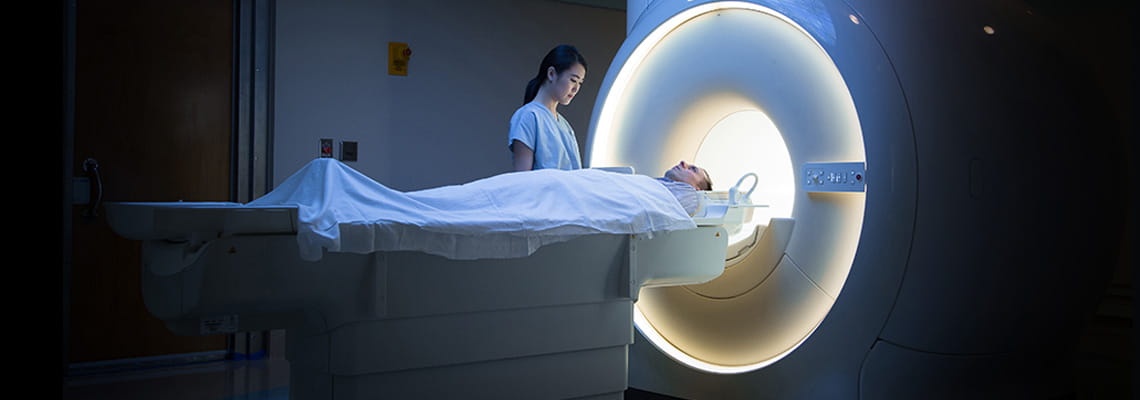Diagnostic Radiology
U.S. PATIENTS:713.790.3333
INTERNATIONAL PATIENTS:+1.713.441.2340

Our Approach to Treatment
Houston Methodist offers patients advanced imaging and radiology services and technologies. Our board-certified radiologists have access to a range of diagnostic imaging and radiology services, including:Computed Tomography (CT)
Computed tomography (CT) — moves an X-ray around a patient to produce multiple detailed images from different angles. CT provides greater detail of:
- Abdominal and aortic aneurysms
- Blood flow
- Bone injuries and density
- Head, neck and spine injuries
- Heart conditions and cardiovascular disease
- Internal organs
- Muscle and skeletal disorders
- Oncological imaging
- Transplant imaging
Magnetic Resonance Imaging (MRI)
Magnetic resonance imaging (MRI) — uses high-powered magnets and radio waves to produce images of organs and structures to:
- Diagnose cardiac conditions and strokes
- Assess blood flow and vascular conditions
- Detect tumors and diagnose cancer
- Diagnose breast disease
- Examine reproductive organs
- Diagnose brain, spinal cord, bone and joint conditions and injuries
- Evaluate infections
Nuclear Medicine
Nuclear medicine — uses small amounts of radioactive materials texamine organ function and structure. Positron emission tomography (PET) is a type of nuclear medicine that uses radioactive materials, a special camera and computer tevaluate organ and tissue functions. Tests include:
- Bone scan — diagnoses bone diseases, infections or injuries
- Brain scan — evaluates brain disorders such as Alzheimer’s disease, seizures, tumors and strokes
- Hepatobiliary scan — identifies gallbladder disorders and bile duct obstructions
- Lung ventilation and perfusion scan (VQ scan) — measures air and blood flow in and out of the lungs
- Lymphoscintigraphy — evaluates the lymphatic system and identifies lymph nodes for removal
- Octreoscan — whole-body scans that identify rare neuroendocrine tumors
- Renal scan — evaluates Kidney blood flow and function
- Parathyroid scan — identifies abnormal parathyroid glands that cause hyperparathyroidism
- I-131 whole body scan —detects thyroid cancer spread
Ultrasound
Ultrasound — uses sound waves tproduce images of soft tissues inside the body. Types include:
- Abdominal ultrasound — detects gallstones or tumors
- Aortic duplex exam
- Arteriography and venography —diagnose blood flow abnormalities
- Breast ultrasound
- Carotid ultrasound
- Doppler ultrasound
- Echocardiogram
- Intravascular ultrasound (IVU) — enables radiologists tsee the inner wall of blood vessels
- Musculoskeletal ultrasound — examines joints or muscles
- Obstetrical ultrasound — monitors fetus development
- Pelvic ultrasound — identifies tumors or masses
- Peripheral vascular ultrasound — diagnoses vascular conditions
- Prostate ultrasound — examines nodules
- Renal ultrasound — examines the kidneys and urinary tract
- Scrotal ultrasound — examines the testicles
- Thyroid ultrasound — examines the thyroid
- Transcranial Doppler (TCD)
- Vascular ultrasound
X-Ray
X-ray — uses a small dose of radiation tproduce images of body structures. Types include:
- Barium X-ray — diagnoses conditions such as tumors, polyps, hernias, strictures, ulcers and other gastrointestinal inflammatory conditions in the GI tract
- Bone density scan
- Fluoroscopy — studies movement of internal body parts and systems such as blood flow through a blood vessel or food passing through the stomach and intestines
